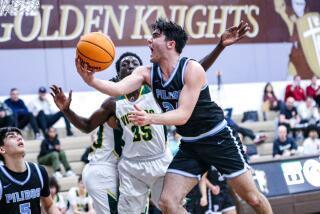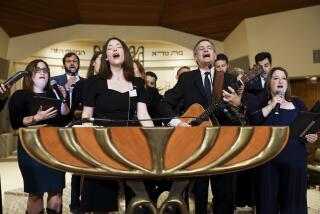L.A. Hospitals Treat Soviet Quake Cases : 14 Children Are Flown Here for Advanced Care
The two teen-agers spend their days glued to a video game screen in their room at Centinela Hospital Medical Center. Having arrived in the United States for medical treatment only last week from Soviet Armenia, they have just become acquainted with the game. And like teen-agers everywhere, they find it irresistible.
The boys are among 14 youngsters flown to Los Angeles to receive medical treatment for injuries suffered in the devastating December earthquake that leveled towns in their native land, killing at least 55,000 and leaving 500,000 homeless.
Los Angeles is a long way from home, especially for the boys who have never heard of Disneyland or Hollywood. Only Michael Jackson’s name brought a smile of recognition to their faces.
Main Concern
Tigran Chobanian, 14, who is scheduled for leg surgery this week, said he would like to see a bit of the city before returning home. But like the other youngsters, Tigran added that his main concern was getting well and returning to his family. He and his immediate family were among the lucky 10% to survive the quake that destroyed their hometown of Spitak.
“Many of my relatives were killed,” he said through a translator.
The magnitude of the loss among others in the group was even greater. A 3-year-old girl, whose legs have been amputated, traveled to the United States accompanied by her grandmother--one of her few surviving family members. They lost 76 relatives in the quake, according to a doctor who had spoken with them.
According to hospital staff members, most of the children, ranging in ages from 2 to 16, have adjusted well to their new surroundings.
“When they first arrived last week, they were very scared,” said Julius Mason, a spokesman for Centinela Hospital. “But they’ve since opened up, are communicative and lively.”
About half of the children are undergoing surgery this week at Centinela to fix broken bones that have not healed correctly. Most of the others, receiving care at Shriners Hospital for Crippled Children, have had limbs amputated and need to be fitted with artificial ones.
Donating Services
One 2-year-old and her father are guests at the home of a Los Angeles plastic surgeon, who is also donating his professional services to the youngster who suffered extensive facial injuries in the quake.
The children are the first group of earthquake victims from Soviet Armenia to come to the West Coast for treatment. About 50 other victims have been treated in the United States, most of them at East Coast hospitals. Still others have received medical assistance in several Western European countries, reported an Armenian doctor traveling with the group.
Shriners hospitals, which offer services to children at no cost, provided treatment earlier to other young Armenian victims at several of their East Coast facilities. At Centinela, the Children’s Charity Fund will foot the bill. Hospital officials there estimate that the total cost of medical services for the 14 children will run into the hundreds of thousands of dollars.
The Los Angeles trip was arranged by Medical Outreach for Soviet Armenians, a nonprofit organization that has been supplying Armenian hospitals with equipment even before the earthquake. Its founder, Glendale-based orthopedic surgeon Vartkes Najarian, was on the first U.S. medical assistance plane to reach Armenia after the Dec. 7 quake.
Waiting List
Members of the group have volunteered as interpreters and have prepared home-cooked meals for the youngsters unfamiliar with American food. Najarian said that the waiting list of Armenian community members hoping to visit the children is long.
“Many have been turned away,” he said.
Although the children received some treatment back home for their injuries, it was limited, explained Dr. Robert W. Chandler, an orthopedic surgeon at Centinela.
“They’re doing the best they can with limited resources,” he said of the Soviet medical system that was overwhelmed by the earthquake’s human toll. Most of the affected region’s medical facilities were lost in the quake.
“In the midst of a disaster, the first priority is saving life and limb,” Chandler explained. “Then you deal with the reconstructions, which is what we are now helping them with.”
More to Read
Sign up for Essential California
The most important California stories and recommendations in your inbox every morning.
You may occasionally receive promotional content from the Los Angeles Times.










